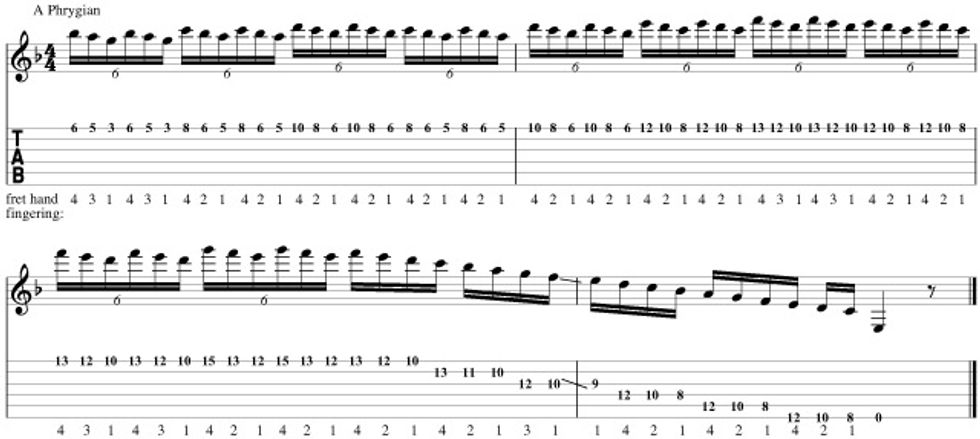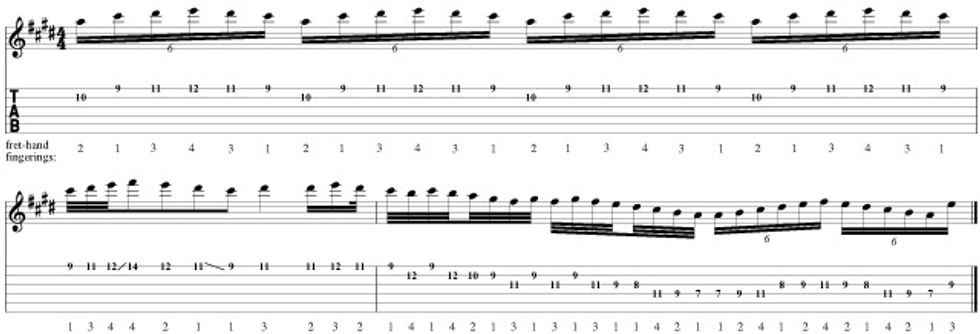Mike uses everything you''ve learned in the previous Modal lessons to show you how to solo over a modal progression.
Welcome back! Now that you know how to construct the modes across the neck with the use of tetrachords from the previous lesson, this lesson we are going to put the modes to use one more time. I put together a modal progression that uses different scales that are not related so you can get used to soloing in different keys, like in a real life situation. You will want to construct the modes in this manner, record them, and solo over them. I recorded an improvised shred-type solo over the progression so you can hear what I would play over it, which progressed into a section of a song. In the examples below, I will show you some examples I used over the progression.
Ex. 1 - Download Example Audio
Here is a modal progression that I put together that mixes the modes up in different keys. It starts out with A Phrygian (A-Bb-C-D-E-F-G) for 8 bars and then G Mixolydian (G-A-B-C-D-E-F) for 4 bars, A Lydian (A-B-C#-D#-E-F#-G#) for 4 bars and finally E Dorian (E-F#-G-A-B-C#-D) for 4 bars. I mixed in the notes of the modes with the chords to give it a nicer feel and a little more spice. When the name of the mode is just listed on a chart you should know what chords to use and how to create the sound.

Ex. 2 - Download Example Audio
This first example uses the A Phrygian scale and it is a one-string sextuplet pattern that moves up the neck. On the recording, the very end is a little different, but the main part of the line is the one string idea, which is great for building coordination.

Ex. 3 - Download Example Audio
This next example is based off diatonic seventh chord arpeggios that follow a pattern up the A Phrygian scale. Basically, there are three 7th arpeggios with notes added from the scale. I will show you the basic idea. The first arpeggio is an Am7 (A-C-E-G) with an added F note. Next, we have an Em7 (E-G-B-D) arpeggio without the fifth, but the b5 and four are inserted. Finally I use a Bb major 7th (Bb-D-F-A) arpeggio with an added G note, which creates a Bb major 6th sound. The final arpeggio is just a Bb major 7th up an octave.

Ex. 4 - Download Example Audio
This example is from the A Lydian scale. The whole first bar is a two-string repeating pattern which is another great picking idea and then a real fast pattern that moves down the scale. Be sure to go slow and make sure that both hands are in sync.
Ok, this is it for this lesson! Be sure to make up your own modal examples, and don't forget to check out my new CD, Electric City, at mikecampese.com.


